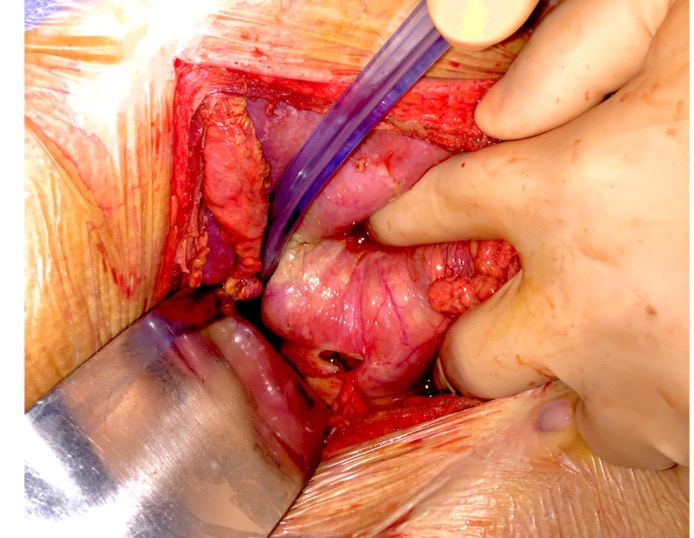Erosion of IVC Filter causing Pneumoperitonitis
John Gigioli, Tamas Kovacs, Jesus G Jimenez
FAU Charles E. Schmidt College of Medicine, Boca Raton, FL
Abstract
Background and Case Presentation:
Inferior vena cava (IVC) filters are commonly placed in patients in whom anticoagulation is contraindicated. Filters are not without complications. IVC perforations are one of the serious complications of IVC filter placement, often presenting with filter erosion into adjacent organs. Duodenal perforations are often found incidentally but presentation can include chronic abdominal pain, nausea, vomiting, or even significant gastrointestinal bleeding. We present a case of peritonitis secondary to IVC filter strut erosion through the duodenum resulting in an intraperitoneal perforation. We then present our systematic review of the literature. To our knowledge, this is the first reported case of IVC filter erosion presenting with pneumoperitoneum.
A 61-year old male presented to the emergency department with a 2-day history of abdominal pain that suddenly worsened on the morning of presentation. Upon presentation to the ED, the patient had hypotension and tachycardia with peritonitis. An upright chest x-ray was performed, which revealed free intraperitoneal air under the diaphragm. The patient was subsequently taken to the operating room for exploration and was found to have an intraperitoneal duodenal perforation secondary to inferior vena cava filter strut erosion confirmed by intraoperative fluoroscopy. The filter strut was cut flush to the wall of the inferior vena cava with a wire cutter and the duodenal injury was repaired with an omental patch. Once the patient had recovered from the initial operation, he underwent successful endovascular retrieval of the inferior vena cava filter.
Methods:
The MEDLINE database (1963-2020) was queried for all studies related to inferior vena cava filters. Articles not available in English were excluded. Articles that did not mention “perforation” or “penetration” were excluded. Only studies that included confirmation of perforation by CT, endoscopy, or operative findings were included.
Results:
Out of 4070 results, a total of 102 case reports and 32 retrospective studies including a total of 2770 patients were included for final analysis. Out of 2477 patients who had imaged IVC filters, 1199 (48.4%) patients were found to have IVC filter perforation. 16 retrospective studies and 101 case reports reported on symptomatology. Out of the 584 patients in those reports, 513 (87.8%) of patients were asymptomatic. 22 papers including 19 case reports describe clipping perforated filter struts intraoperatively with wire cutters to facilitate filter retrieval safely and effectively.
Conclusion:
IVC filter erosion is a well-documented complication of both retrievable and non-retrievable IVC filter placement. Due to most cases being asymptomatic, the true incidence of this complication is likely underreported. Once a filter erodes through the IVC, it can erode into virtually any adjacent structure and can result in potentially serious complications. If a perforated IVC filter
strut is encountered intraoperatively, strut removal with a wire cutter and staged endovascular retrieval is a safe management option. 
Back to 2020 Abstracts
